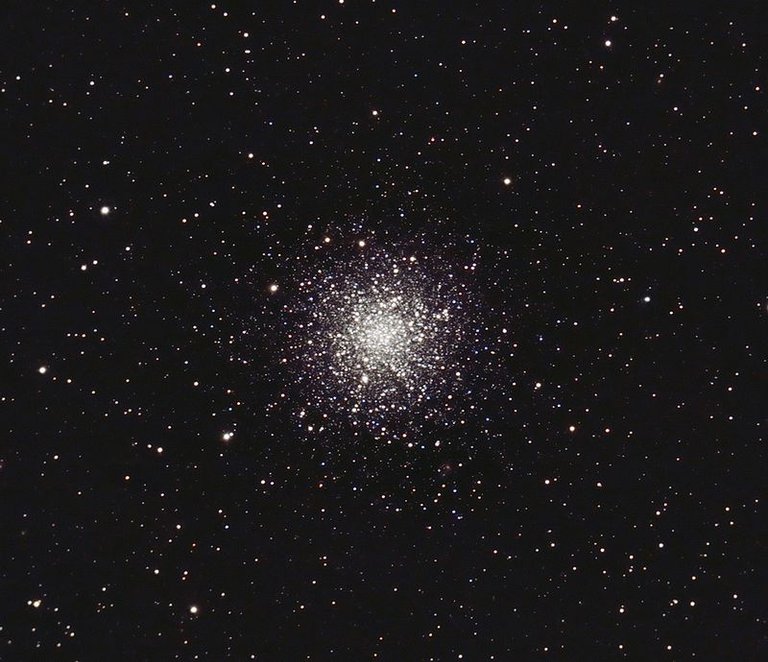
Image of NGC 6791 taken by the Hubble Telescope. Image source: [1]
NGC 6791 is an open cluster found in the constellation Lyra. It was discovered by the German Friedrich August Theodor Winnecke in 1853. It is one of the largest and oldest open clusters, with an approximate age of 8 billion years.
The stars of NGC 6791 are relatively impure, because the relative amounts of heavy elements (usually metals) are greater in these stars than in the others (of other clusters). Older stars are supposed to be metal poor, because metals have been accumulating very slowly in our Milky Way. This enigma makes NGC 6791, one of the most studied open clusters and a possible model of evolution of the stars located in the centers of the galaxies.

Detail from the Kepler image showing NGC 6791. Image source: [2]
Messier 12

The high concentration of stars within globular clusters, like Messier 12. Image source: [3]
Messier 12 (NGC 6218) is a globular cluster found in the constellation Ophiuchus, very similar to the nearby Messier 10. Messier 12 shines in a rich field, surrounded by stars, although with small telescopes does not present a great level of detail. Using medium telescopes we can easily observe its well-defined limbus, that is, its stellar periphery. With large instruments it is possible to detect that it is constituted by a great number of red giant stars, and that it is not perfectly round, if not that it presents / displays a jagged form, with zones in its interior brighter than others.
This globular cluster, which exerts its influence on a spherical zone of about 75 light years, was taken at the time by an open cluster. The confusion arises from the lack of low mass stars in the cluster. In fact, stars with a low mass (half the mass of our Sun) are the most common in globular clusters, and also around the Solar System. Most of the low-mass stars of Messier 12 were dragged by the gravitational influence of the Milky Way, and instead of traveling with the rest of the cluster, orbit around the galaxy. In addition, M12 only contains 13 variable stars.
This is another of the discoveries of Charles Messier on the night of May 30, 1764, stating that "I have discovered a nebula in the Serpent, between the arm and the left side of Ophiuchus ... the nebula contains no stars: it is round, is dim ... ". As with many other objects, his telescope was not powerful enough to be able to observe the stars that make up this cluster.
More details here: Messier 12

Messier 12, from 2MASS. Image source: [4]

The Central Part of Messier 12. Image source: [5]

M12 with amateur telescope. Image source: [6]

Nice topic
Voted
Followed
Thank you
@keval
If you have few minutes,see my post